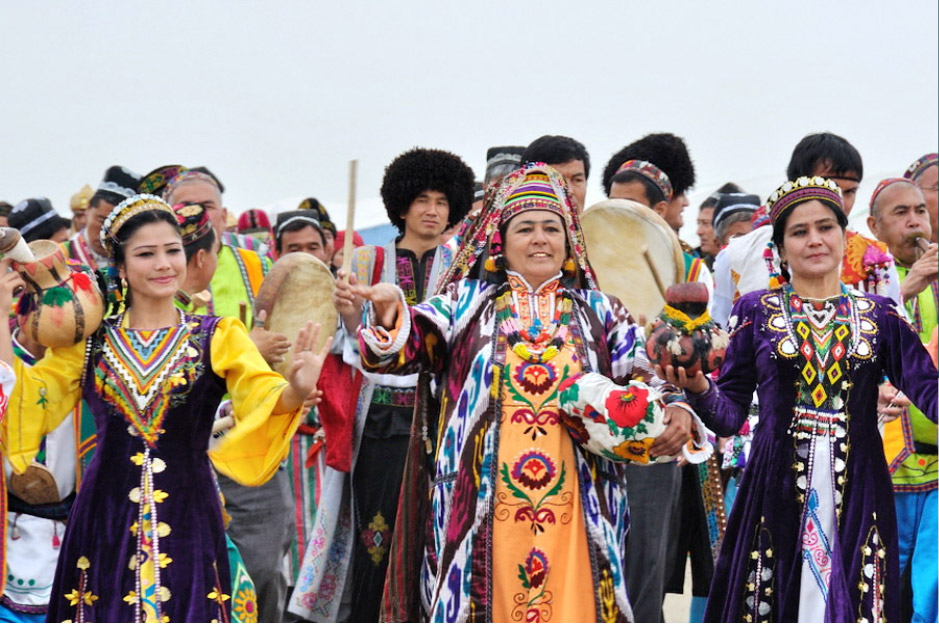Cultural Heritage of KarakalpakstanPublished on EGF: 20.03.2024 by EGF Editor

Ancient Khorezm is the birthplace of Zoroastrianism. This is evidenced by a number of extant archaeological monuments: dakhmas, fire-worshipper temples, necropolises with ossuary containers and others. The rise of Islam in the VIII century A.D. altered not only the mode of life and religion, but also the architecture. Fired brick, a new construction material, was introduced. It became the main material for constructing sophisticated mausoleums, mosques and khanakas with domes, which were beautifully adorned with architectural decorations and epigraphic inscriptions. For thousands of years the Aral Sea region was situated at the crossroads of cultures. The Great Silk Road, which played a significant role in developing cultural and economic relations with Europe, Western Asia, Caucasus, Central Asia and China, passed through the Ustyurt Plateau. It is probable that one of the Silk Road branches went through the ancient city Tanais, situated in the lower reaches of Don, then crossed Russia’s southern steppes, the Lower Volga region, the Aral Sea region and from there traveled through Southern Kazakhstan until reaching Altai and Eastern Turkestan, where it linked with the main route of the Great Silk Road. One of the route branches from the Northern Aral Sea region went to Sogdiana through Khorezm and then turned to the south. Consequently, several thousands of historical and architectural monuments relating to the history of the Great Silk Road can be found in the vast territory from the Fergana Valley oases to the desert shore of the Aral Sea. 
The national identity of Karakalpaks is well reflected in their rich folklore, beautiful dances, original music, and ceremonies that still play an important role in people’s lives. Thus, the singer/musicians Jirau and Baksi, as well as the eposes Alpamis and Kirik kiz, among others, still enjoy great popularity today. Karakalpak traditions are well represented in traditional handicrafts. Simple ornaments and forms of old workpieces indicate their relation to the arts of ancient and medieval nomads in Central Asia. Traditional Karakalpak handicraft developed primarily as necessary household items for the yurta dwellings and were made from available materials: wool, skin, bones, wood and cotton. At the beginning of the XX century women still made ornamental floor mats, multicoloured feltings for yurta decoration, woven rugs, patterned carpets, as well as patchwork. All adult women possessed the art of embroidery. Men plied more complex trades, making yurtas and musical instruments, engaging in wood carving, jewellery making, leather processing and other trades. | Markets | The Caspian and Central Asia |
|